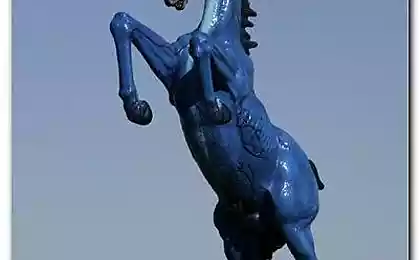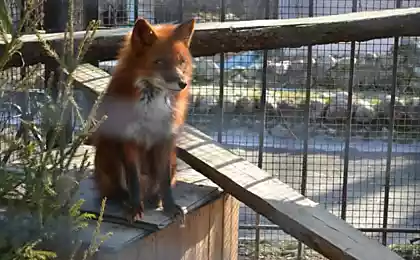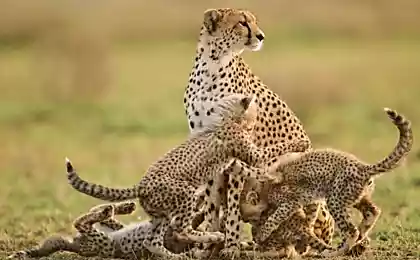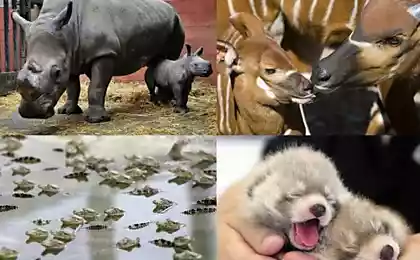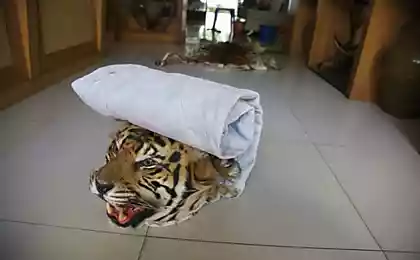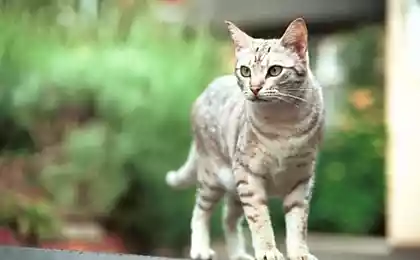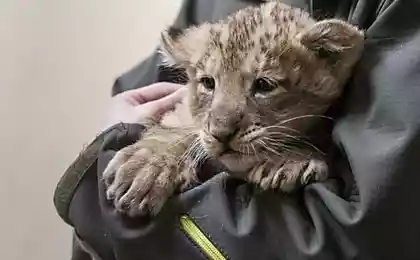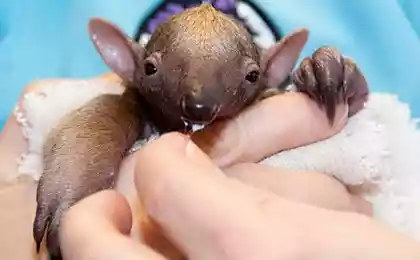208
Denver Zoo reveals cubs of smoky leopard
Two cubs of smoky leopard, born at Denver Zoo on March 14, appeared before the public. The mother of the toddlers, who were already named Pi and Rhu, was a three-year-old female who gave up her offspring shortly after giving birth.
This often happens in zoos. For some reason, the young mother lost all interest in her cubs and stopped feeding them. Therefore, all the care of newborns was taken by the staff of the wildlife park.
The first month, until recently, the babies spent in an incubator, where special temperature conditions were maintained. In addition, people had to feed the cubs from a bottle six times a day and even at night.
Just recently, the administration of the Denver Zoo decided to show the grown-up babies to the general public and correspondents. Small leopards were placed in a special covered enclosure with one glass wall, through which you can freely observe the kittens.
Smoky leopard (Latin Neofelis nebulosa) is one of the representatives of a large cat family. Although it looks remotely like a leopard, it has nothing to do with real leopards. This predator has a significant ecological and morphological originality, occupying an intermediate position between large and small cats.
Smoky leopards live in Southeast Asia. It is widely distributed from southern China to Malacca and from the eastern Himalayas to Vietnam. But the subspecies, once found in Taiwan, unfortunately became extinct. It is found in tropical and subtropical forests located at altitudes up to 2 thousand meters above sea level.
Most of the time these beautiful cats spend in the trees. They hunt mainly at night. The diet of the smoky leopard includes birds, monkeys, wild pigs, small deer Sika, goats and porcupines. It likes to attack prey directly from tree branches, but it is also easy to hunt on the ground. In a successful hunt, he is helped by his amazing color and silent step.
Smoky leopard is a rare species. According to the latest estimates in the wild there are about 10 thousand individuals. Therefore, IUCN is listed in the International Red Book.
Source: zoopicture.ru
This often happens in zoos. For some reason, the young mother lost all interest in her cubs and stopped feeding them. Therefore, all the care of newborns was taken by the staff of the wildlife park.
The first month, until recently, the babies spent in an incubator, where special temperature conditions were maintained. In addition, people had to feed the cubs from a bottle six times a day and even at night.
Just recently, the administration of the Denver Zoo decided to show the grown-up babies to the general public and correspondents. Small leopards were placed in a special covered enclosure with one glass wall, through which you can freely observe the kittens.
Smoky leopard (Latin Neofelis nebulosa) is one of the representatives of a large cat family. Although it looks remotely like a leopard, it has nothing to do with real leopards. This predator has a significant ecological and morphological originality, occupying an intermediate position between large and small cats.
Smoky leopards live in Southeast Asia. It is widely distributed from southern China to Malacca and from the eastern Himalayas to Vietnam. But the subspecies, once found in Taiwan, unfortunately became extinct. It is found in tropical and subtropical forests located at altitudes up to 2 thousand meters above sea level.
Most of the time these beautiful cats spend in the trees. They hunt mainly at night. The diet of the smoky leopard includes birds, monkeys, wild pigs, small deer Sika, goats and porcupines. It likes to attack prey directly from tree branches, but it is also easy to hunt on the ground. In a successful hunt, he is helped by his amazing color and silent step.
Smoky leopard is a rare species. According to the latest estimates in the wild there are about 10 thousand individuals. Therefore, IUCN is listed in the International Red Book.
Source: zoopicture.ru
British man plans to create almost underground oasis park in Abu Dhabi
The earthquake in Japan may cause global disasters


